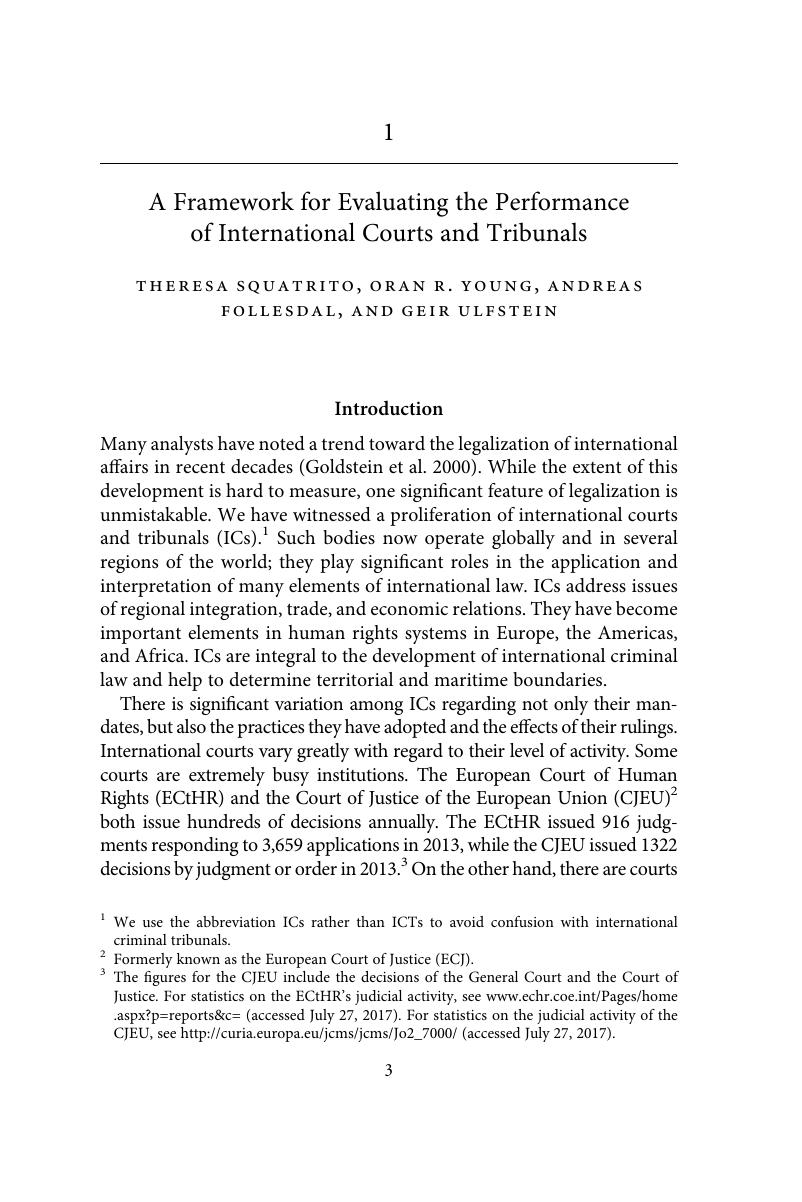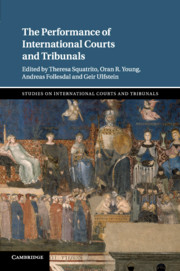Book contents
- The Performance of International Courts and Tribunals
- Studies on International Courts and Tribunals
- The Performance of International Courts and Tribunals
- Copyright page
- Contents
- Figures
- Tables
- Maps
- Contributors
- Acknowledgments
- Abbreviations
- Introduction
- 1 A Framework for Evaluating the Performance of International Courts and Tribunals
- Part I
- Part II
- Part III
- Index
- References
1 - A Framework for Evaluating the Performance of International Courts and Tribunals
from Introduction
Published online by Cambridge University Press: 29 March 2018
- The Performance of International Courts and Tribunals
- Studies on International Courts and Tribunals
- The Performance of International Courts and Tribunals
- Copyright page
- Contents
- Figures
- Tables
- Maps
- Contributors
- Acknowledgments
- Abbreviations
- Introduction
- 1 A Framework for Evaluating the Performance of International Courts and Tribunals
- Part I
- Part II
- Part III
- Index
- References
Summary

- Type
- Chapter
- Information
- Publisher: Cambridge University PressPrint publication year: 2018
References
- 2
- Cited by



